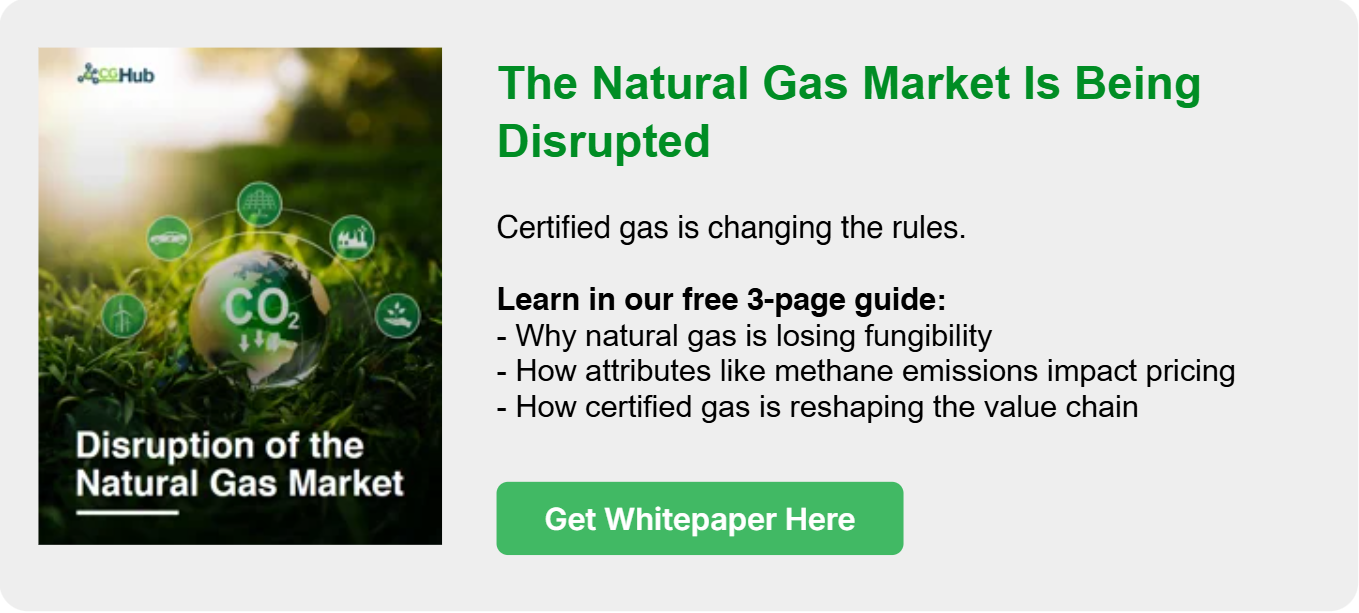
Will CG Hub Support Renewable Natural Gas (RNG) Trading in the Future?
The energy commodities market is evolving rapidly, with renewable natural gas (RNG) trading solutions becoming another key focus for sustainability-driven buyers and investors. As companies look for low-carbon alternatives, many are wondering: Will the CG Hub platform expand to support RNG trading?
In this blog, we’ll explore the potential for RNG trading on CG Hub, why demand for RNG in energy trading is growing, and what this means for traders and market participants.
What Is Renewable Natural Gas (RNG)?
RNG, also known as biomethane, is a low-carbon alternative to conventional natural gas. It’s produced by capturing methane emissions from sources like:
- Landfills
- Agricultural waste
- Wastewater treatment plants
Because it repurposes waste emissions, RNG is considered carbon-neutral or even carbon-negative, making it a valuable asset for companies with net-zero goals.
With the increasing corporate and regulatory push for decarbonization, RNG is expected to play a major role in sustainable natural gas trading.
Is There Demand for RNG Trading?
✅ Corporations & Utilities Are Driving Demand
Many large energy buyers—including utilities and Fortune 500 companies—are committing to carbon reduction strategies. RNG trading solutions are a key tool for meeting sustainability targets without overhauling infrastructure.
✅ Government Incentives Are Fueling Growth
In North America and Europe, tax credits, low-carbon fuel programs, and emissions reduction targets are driving the expansion of RNG production and trading.
✅ RNG Premium Pricing & Market Opportunities
Similar to certified natural gas, RNG often commands a premium price due to its environmental benefits. Traders and producers who enter this market early could capitalize on strong demand and price advantages.
Given this growing interest, it’s natural to ask: Will CG Hub expand to support RNG trading?
How CG Hub Will Support RNG Trading in the Future
CG Hub is already designed for certified natural gas trading, providing a digital marketplace for energy commodities where buyers and sellers can trade with transparency and confidence. When RNG trading is added to the platform, traders would benefit from:
🔹 Seamless Integration of RNG & certified natural gas Markets – A unified hub for all low-carbon gas trading.
🔹 Real-Time Emissions Tracking & Reporting – Verified carbon intensity tracking for RNG transactions.
🔹 Regulatory Compliance & Certification Management – Streamlined audits for tax credits and low-carbon programs.
By leveraging its existing infrastructure, CG Hub will make RNG trading as efficient and transparent as certified natural gas trading.
What’s Next for RNG on CG Hub?
While CG Hub does not currently support RNG trading, the demand for low-carbon energy solutions is growing. As more companies seek RNG as part of their sustainability strategy, there is a strong possibility that CG Hub will expand its offerings in the very near future.
Traders, utilities, and producers should stay informed about new developments—early adopters could gain a competitive advantage in this expanding market.
Conclusion: The Future of RNG Trading Is Bright
Renewable Natural Gas is becoming another key player in the transition to a low-carbon economy. While CG Hub is currently focused on certified natural gas trading, its potential expansion into RNG trading solutions could provide new opportunities for market participants.
As demand for decarbonization solutions grows, platforms that facilitate transparent, efficient, and verifiable RNG trading will be in high demand. Stay ahead of the curve—RNG could soon be a major part of the certified natural gas market.
FAQs
❓ Does CG Hub currently support RNG trading?
Not yet, but with rising demand, CG Hub is expanding to include RNG.
❓ Why is RNG becoming so important?
RNG is a low-carbon alternative to conventional gas, helping companies meet emissions targets without major infrastructure changes.
❓ What’s the difference between RNG and certified natural gas?
Certified natural gas is verified as responsibly produced, while RNG is derived from organic waste sources and has a lower carbon footprint.


